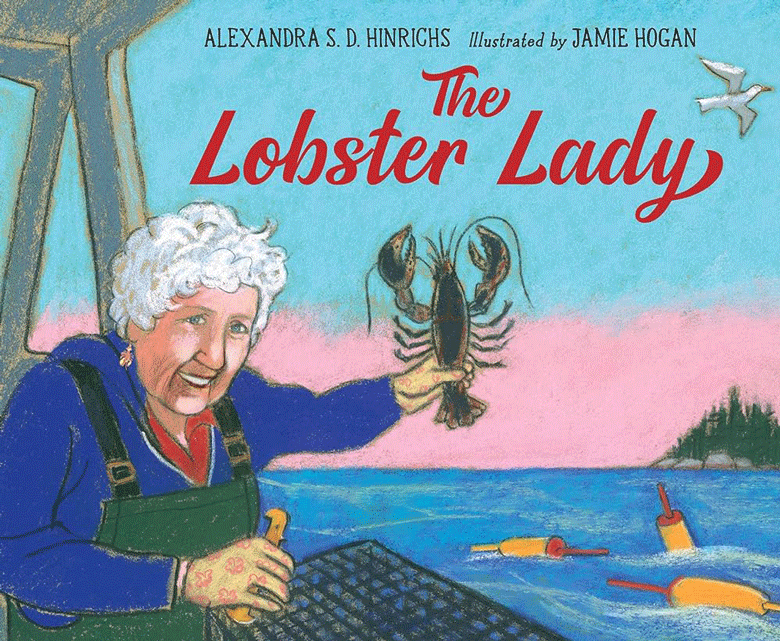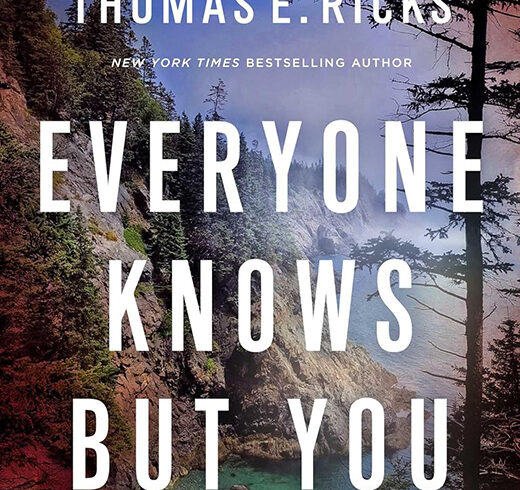The Lobster Lady
By Alexandra Hinrichs, illustrations by Jamie Hogan; Charlesbridge Publishing (2023)
Island Readers & Writers, an organization connecting children and books in communities on Maine’s islands and Washington County, recently sent Alison Johnson, director of its school programs, with author Alexandra Hinrichs, to Vinalhaven to speak to its students in pre-K through fifth grades.
Hinrichs, who lives in Bangor, might have guessed she was visiting a lobstering community. But as she shared The Lobster Lady—her newest book, illustrated by Jamie Hogan—she may not have known what that meant about her young audience.
The picture book is about Virginia Oliver of Spruce Head. At the age of eight, Oliver started piloting a lobster boat while working alongside her father, eventually becoming captain of her own boat. She still—now 103 years old—continues to go out in her boat, hauling traps.
They particularly enjoyed seeing the doctor scold her, asking why she was still going out on her boat…
As the students asked the author technical questions, it occurred to me—I was a guest that day observing the event—that I shouldn’t be surprised. They were curious about details like the number of traps Virginia sets and if she ever caught a blue lobster. Seeing how the book resonated with the children, I decided to ask if some at the Vinalhaven School might be willing to talk with me and help review the book, and three fifth graders agreed.
Robbie Brooker, the school librarian, introduced me to Brady, Gia, and Alice. Each of told me they were readers and loved books. They thought the author presentation was interesting and appreciated that everybody in the elementary grades was given a copy of the book.
What scene did they like best in The Lobster Lady? When Virginia’s finger was injured from a crab pinching her hard while on her boat.
I interjected, “But Virginia was hurt. Couldn’t that—an attacking crab—scare kids?”
Three heads shook in disagreement, saying “There’s much worse that can hurt you than that on a boat.” They knew; serious injuries do occur.
But these students were talking about the picture showing Wright in the doctor’s office afterwards, her finger now wrapped in a thick bandage of white gauze. They particularly enjoyed seeing the doctor scold her, asking why she was still going out on her boat (implying she could retire.)
The kids recognized that tone of voice—a “clueless” adult asking a “ridiculous” question with an obvious answer. Those students understood why Virginia still fished because she loves it.
In the book, that question to Virginia served to provoke some childhood memories, portrayed in pages of illustrations. The importance of fishing in her family was obvious. But the history held less interest for these students, and Alice voiced a preference for the present day.
The students liked the picture of her boat, the Virginia, and thought its portrayal was very realistic. In the water, pot buoys were seen bobbing, and overhead, gulls watched for food.
They thought filling the bait bags deserved more information, including what it is (Virginia used pogies) and that it can stink. Brady talked about whether you catch or buy what’s used for bait. Commenting on a picture with a rosy sunrise as Virginia began her day on the boat, Gia pointed out that the workday starts very early, getting up when still dark.
One detail that never came up in our conversation: Did a lobsterman’s gender or age matter? Not to these students, who hadn’t registered either as central to the story.
This wasn’t a book primarily about a 103-year old woman who lobsters, but about someone who has done it one’s whole life and still wants to. No surprise to them, that.
Tina Cohen is a Massachusetts-based therapist who spends part of the year on Vinalhaven.





